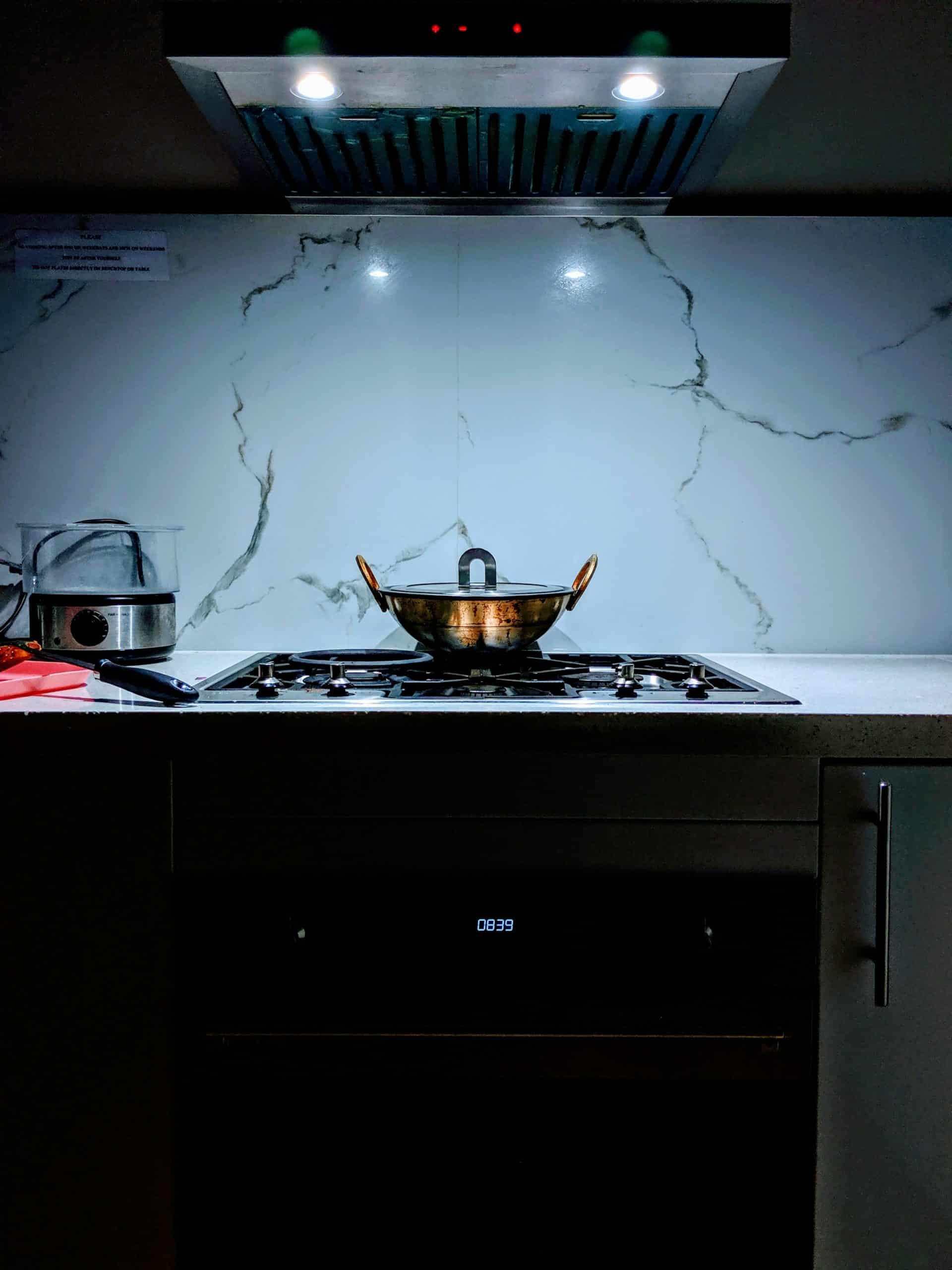How can a smart oven be integrated into an existing traditional kitchen design?

Evolving technology is continuously reshaping the way we live our daily lives. From smartphones to smart TVs, we've incorporated smart technology into various facets of our lives, and our kitchens are no exception. One kitchen appliance that's taking a giant leap into the future is the oven. The advent of smart ovens is revolutionizing the cooking space, offering convenience, and adding a chic element to kitchen designs.
For those of you who are contemplating upgrading your traditional kitchens with smart appliances, you might be wondering how to incorporate a smart oven into your existing kitchen design without disrupting the aesthetics. This article seeks to guide you on how to seamlessly integrate a smart oven into your traditional kitchen, maintaining its charm while introducing modern functionality.
Also read : What are the key considerations for a kitchen remodel to accommodate a large family?
Understanding the Smart Oven
Before diving into the integration process, it's essential to understand what a smart oven is and its key features. A smart oven, unlike traditional ovens, is a high-tech cooking appliance that leverages advanced technology to simplify and enhance your cooking experience. These ovens come equipped with features such as Wi-Fi and Bluetooth capabilities, allowing you to monitor and control your cooking process remotely, saving you time and energy.
Smart ovens also have built-in sensors and cameras that monitor the food as it cooks, auto-adjusting the temperature and cooking time accordingly. Brands such as Wolf have taken the smart oven to another level by integrating voice control features, meaning you can command your oven to preheat or turn off without even touching it. It's this convenience and efficiency that makes smart ovens a worthy addition to your kitchen.
Also read : How can you integrate a modern touchless faucet system in an older kitchen?
Choosing the Right Smart Oven for Your Kitchen
The market is flooded with a plethora of smart ovens, each with unique features and designs. The key to integrating a smart oven into your traditional kitchen design lies in choosing the right oven that matches your kitchen's aesthetics and your cooking needs.
Firstly, measure your available space. Traditional kitchens often have specially built cabinets for ovens, so you need to ensure the smart oven you choose fits into the allocated space. It's also essential to consider the color and finish of the oven. Stainless steel ovens, for instance, offer a sleek, modern look that could add a nice contrast to your traditional kitchen design.
Brands like Wolf offer smart ovens with a variety of finishes and sizes, so you can find one that fits your kitchen perfectly. You'll also want to consider the oven's features. If you're a coffee enthusiast, for instance, a smart oven with a built-in coffee maker could be a perfect choice.
Integrating the Smart Oven into Your Kitchen Design
Once you've chosen your smart oven, the next step is integrating it into your kitchen. There are several ways you can do this, but the most common method is by placing the oven in existing cabinets. This method keeps the oven out of sight, maintaining the traditional look of your kitchen.
If you have a larger kitchen, you could opt to have the oven built into your kitchen wall. This design not only saves counter space but also elevates the oven, making it easier to access. The choice between built-in and wall-mounted will depend on your kitchen layout, your personal preference, and the oven size.
Lighting and Visibility
A critical aspect of integrating a smart oven into your kitchen is considering the lighting. Good lighting is not only essential for visibility when using the oven, but it also highlights the oven, making it a focal point in your kitchen. You can use under-cabinet lighting to illuminate the oven or install adjustable spotlighting from the ceiling.
Smart ovens often come with their own interior lighting, which helps you monitor your food without opening the oven. Some smart ovens even have transparent touch screens that allow you to see your food as it cooks. This feature not only adds a futuristic feel to your kitchen but also makes it easier for you to monitor your cooking process.
Final Thoughts
Integrating a smart oven into your traditional kitchen design doesn't have to be a daunting task. By understanding the oven, choosing the right one for your kitchen, and considering factors such as space, lighting, and visibility, you can seamlessly incorporate a smart oven into your kitchen. Keep in mind, the aim is to blend the old with the new, keeping traditional aesthetics while embracing modern technological advancements. This balance will give your kitchen a unique, timeless appeal that marries tradition and the future in a harmonious fusion.
Smart Kitchen Appliances: Building a Kitchen of the Future
The concept of a smart kitchen is gaining popularity, and a smart oven is one of the essential appliances to consider when upgrading your kitchen. Smart ovens are the epitome of modern cooking equipment, integrated with cutting-edge technology that offers convenience while amplifying the overall aesthetic appeal of your kitchen.
A smart oven is an investment towards a lifestyle of convenience and efficiency. However, integrating it into an existing, traditional kitchen setup can be a challenge. A successful integration of a smart oven into your kitchen depends on various factors such as the size of your kitchen, the design of your kitchen cabinets, the available space for the oven, and your personal preferences.
The heart of a smart oven lies in its technological features such as Wi-Fi and Bluetooth connectivity, voice control capabilities, built-in sensors and cameras, and even the ability to brew your coffee. Imagine commanding your oven to preheat while you're still in the living room, or having your oven adjust the cooking time based on the type of food.
In addition to these features, smart ovens also come in various sizes and finishes. For instance, brands like Wolf offer ovens in stainless steel finish, which can add a sleek, modern touch to your classic kitchen. The choice of finish and size should be consistent with the overall aesthetic of your kitchen.
Once you've chosen the right oven, it's time to integrate it into your kitchen. This can be done by placing the oven in existing kitchen cabinets, or if you have a spacious kitchen, you can opt for a wall oven setup. In either case, remember to consider the visibility and lighting around the oven for ease of use and to make the oven a focal point in your kitchen.
Conclusion
Embracing smart appliances, especially the smart oven, is a step towards building a smart kitchen that reflects the perfect amalgamation of tradition and advanced technology. Integrating a smart oven into your existing kitchen design can seem challenging, but with careful planning and consideration of factors such as the size, color, and features of the oven, as well as the layout and design of your kitchen, it can be a seamless transition.
Remember, the goal is to blend the new with the old, maintaining the charm of a classic kitchen while adding the functionality and convenience of modern kitchen equipment. A smart oven not only enhances your cooking experience but also adds a futuristic appeal to your traditional kitchen, creating a harmonious fusion that is both timeless and forward-looking. So, why wait? Embrace the future of cooking today with a smart oven.
